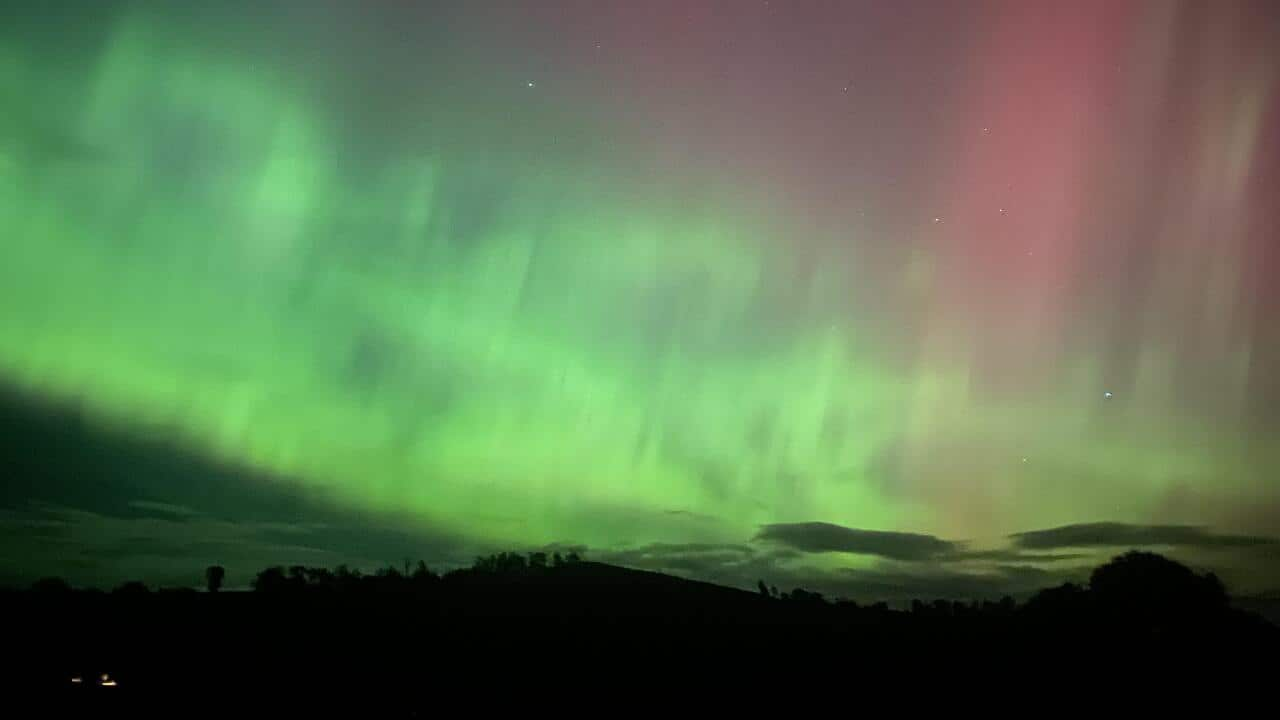In May, Australian stargazers from South Australia to Queensland were treated to 'astonishing' auroras, whose dazzling technicolour displays resulted from the largest geomagnetic storm in almost two decades.
Now, there is a chance the exceptional weather event will be returning to Australian skies, with forecasters expecting a new storm to hit at its strongest this evening, Tuesday 30 July.
The likelihood of auroras occurring increases dramatically during the 'solar maximum', a period that occurs every 11 years in the solar cycle, predicted by experts to take place in 2024.
The Bureau of Meteorology’s (BoM) release of an 'aurora watch' — a warning of the solar event with lead times of up to 48 hours — in the early hours of Monday morning signalled that the natural phenomena is set to make a return.
What is an aurora?
Auroras are caused by 'solar wind', a stream of electrically charged particles that travel from the Sun towards Earth at speeds of up to 2000km per second, according to the BoM.
Most of these particles are intercepted by the Earth’s protective magnetic field, but some travel down the magnetic field lines at the north and south poles.
When these particles interact with gases in our atmosphere, we see the technicolour display of lights in the night sky. According to the US National Aeronautics and Space Administration (NASA), atmospheric reactions with oxygen give off the aurora’s characteristic green and red lights, while nitrogen is responsible for its otherworldly blue and purple glow.
The solar event is called Aurora Australis in the southern hemisphere and Aurora Borealis in the northern hemisphere.
When can I see the aurora in Australia?
The scale of the geomagnetic storm, which relates to the strength of the display, is expected to be at its greatest this evening.
"The predicted arrival time of the solar storm is uncertain, with a variance of twelve hours either side, which is typical for solar eruptions like these," said Dr Brett Carter, a specialist in space weather prediction at the RMIT University school of science.
To help you decide whether it is worth heading out to catch a glimpse, Carter suggests keeping track of incoming space weather data via the BoM, as well as social media feeds.

Australians could catch a glimpse of the Aurora Australis on Tuesday night. Source: AAP / Ethan James
Where can I see the aurora in Australia?
People in southern parts of Victoria and Western Australia have the best chance of seeing the light display, with Carter saying if the storm ends up being as strong as forecast, there could be a possibility of visible auroras in South Australia and as far north as parts of NSW.
Issues in predicting more exact details of weather events like the aurora come down to a lack of research data and prediction models.
"There’s no way to know for sure how this space weather event is going to play out," Carter said.
"We will just have to watch the data come in and see whether the conditions are suitable for aurora viewing or not."










